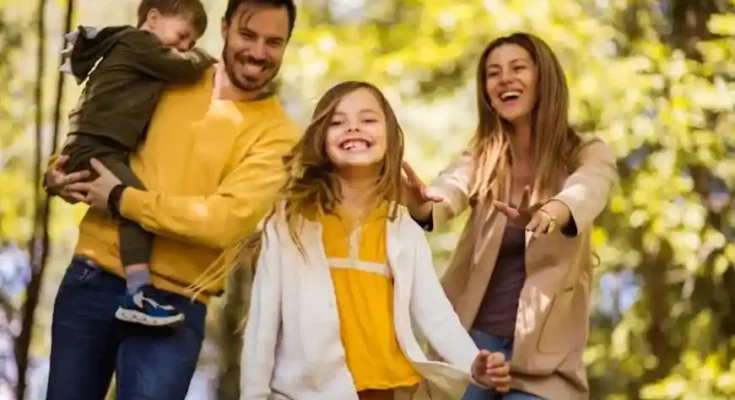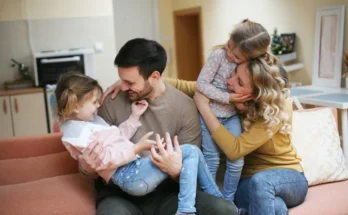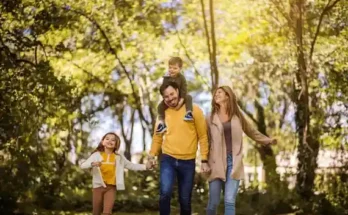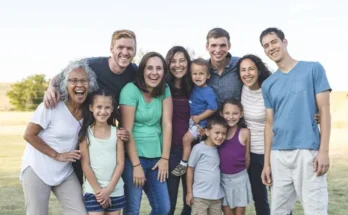The Heart of Humanity:
Family. Just one word, yet it holds generations of meaning, emotion, and identity. It’s the first place we learn how to love, speak, forgive, and belong. Families come in many shapes and sizes, across cultures and continents, but their purpose is universal—to give us roots to ground us and wings to let us soar.
In a world of constant change, where connections can feel fleeting and digital, family remains one of the few constants. It is both sanctuary and launchpad, a source of strength during life’s toughest storms and a celebration of joy in its brightest moments.
The Foundation:
Family is more than a biological link or legal tie; it’s the bedrock of society. It’s where core values are passed down, where traditions are born, and where identity begins to form.
-
Emotional Security and Unconditional Love
The most powerful gift a family can offer is unconditional love. It’s the kind of love that endures through mistakes, misunderstandings, and milestones. Whether through parents, grandparents, siblings, or chosen family, these relationships provide emotional safety—a cushion that makes life’s challenges feel a little less sharp.
This love creates resilience. Children raised in nurturing environments tend to grow into confident, empathetic adults. The knowledge that you have people who love you no matter what can foster mental well-being and emotional stability at every stage of life.
-
A Mirror to Ourselves
Family is often the first mirror we look into. Through family, we see reflections of who we are and who we might become. They show us our habits, highlight our strengths, and sometimes challenge our flaws. In this way, family becomes a crucible of self-discovery—a space where we develop our identity, our beliefs, and our voice.
The Many Shapes of Modern Family:
Gone are the days when “family” only meant a mother, father, and two children living under one roof. Today, family is far more inclusive and flexible, adapting to the realities of modern life.
-
Blended, Chosen, and Extended Families
Divorce, remarriage, adoption, surrogacy, and close friendships have given rise to diverse family structures. Blended families bring together people from different histories to form new bonds. Chosen families—networks of friends and allies—are especially significant for individuals who may not feel supported by their relatives due to gender identity, orientation, or life choices.
Extended families, including grandparents, aunts, uncles, and cousins, continue to play critical roles, particularly in cultures where community care and intergenerational homes are valued. Regardless of form, the essence remains the same: love, support, and connection.
-
Technology and Global Families
Technology has allowed families to stay connected across oceans and time zones. Video calls, shared photo albums, and instant messaging have redefined long-distance relationships. Grandparents read bedtime stories via tablets. Siblings scattered across continents share life updates in group chats.
In this digital age, emotional closeness isn’t limited by geography. The warmth of family can still be felt—even through a screen.
Challenges and Conflicts:
While family can be a source of great comfort, it’s also where we face some of our most difficult emotions. Clashes in values, communication breakdowns, and generational differences can all test the strength of these bonds.
-
Navigating Generational Gaps
Generational divides in families are as old as time. Whether it’s differences in parenting styles, opinions about technology, or beliefs about the world, families often span multiple eras of thought.
These gaps can be frustrating—but they can also be opportunities for learning and growth. When approached with empathy and curiosity, the old can learn from the young, and the young can gain wisdom from the old.
-
Healing and Forgiveness
Sometimes, family relationships can be deeply painful. Toxic dynamics, neglect, or trauma can create emotional scars that last a lifetime. But family also has the capacity to heal, to forgive, and to begin again.
Healing within a family takes time and, often, intentional effort. Whether through honest conversations, therapy, or simply small acts of kindness, families can rebuild what was once broken. Forgiveness doesn’t always mean forgetting—it means choosing peace over pain.
Traditions, Rituals, and the Power of Memory:
One of the most beautiful aspects of family is the creation and continuation of tradition. These are the rituals—both big and small—that provide rhythm to our lives and meaning to our moments.
-
Holidays, Meals, and Milestones
From holiday dinners to bedtime stories, birthday rituals to Sunday barbecues—these moments bind us. They create shared memories, offer comfort, and connect generations through continuity.
Even the smallest rituals, like a good morning hug or a weekend movie night, carry emotional weight. They become the threads that tie us to our history and remind us of who we are.
-
Legacy and Storytelling
Families are also the keepers of stories. They pass down tales of migration, of triumph, of heartbreak and resilience. Grandparents’ anecdotes become family legends, and photographs become time machines.
These stories build identity and belonging. They help younger generations understand their place in a larger narrative, and in doing so, instill pride, purpose, and perspective.
Parenting and the Cycle of Care:
Raising a family is one of the most profound journeys a person can undertake. It’s a role that demands patience, compassion, and an ever-evolving sense of self.
-
From Dependence to Independence
Children begin life completely reliant on their caregivers. Over the years, they learn, grow, and push boundaries—all under the watchful eyes of those who love them most. The ultimate goal of parenting isn’t to hold on, but to let go—to prepare children for a life beyond the nest.
This shift from dependence to independence is bittersweet. But it’s also the ultimate act of love: to raise someone strong enough to stand on their own.
-
The Reversal of Roles
Later in life, many adults find themselves caring for aging parents. The roles reverse, and the child becomes the caregiver. This phase, though often challenging, is also a profound expression of gratitude and responsibility.
It completes the cycle of care and reinforces the strength and significance of family ties, even in life’s most difficult chapters.
Adapting to a Changing World:
As society continues to evolve, so will the concept of family. Social norms, technology, and cultural shifts will redefine what family looks like—but the core values will remain timeless.
The future will see more multicultural, multilingual, and multigenerational families. It will also see increased acceptance of diverse family structures, where love is prioritized over conformity.
What won’t change is the deep human need for connection, for home, for belonging. No matter how it’s shaped, family will continue to be the place where hearts are held, stories are shared, and lives are bound together.
Conclusion:
Family isn’t just a part of life—it is the very fabric of it. It is where we are first known and where we are most deeply loved. Through its many forms, family teaches us how to live, how to relate, how to care, and how to grow.
In the end, family is not defined by perfection, but by persistence. Not by blood alone, but by choice, by presence, by love. It is the quiet force that lifts us when we fall and cheers us on as we rise.
And no matter how far we go in life, it is family that reminds us where we came from—and why we continue.




